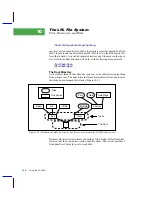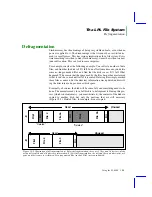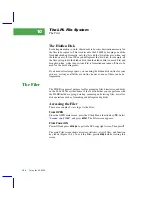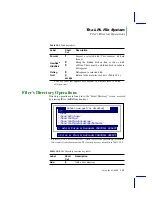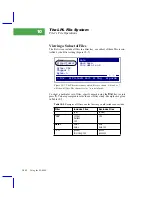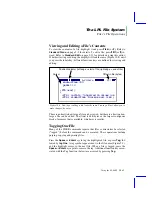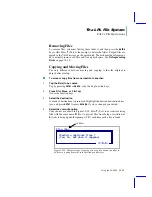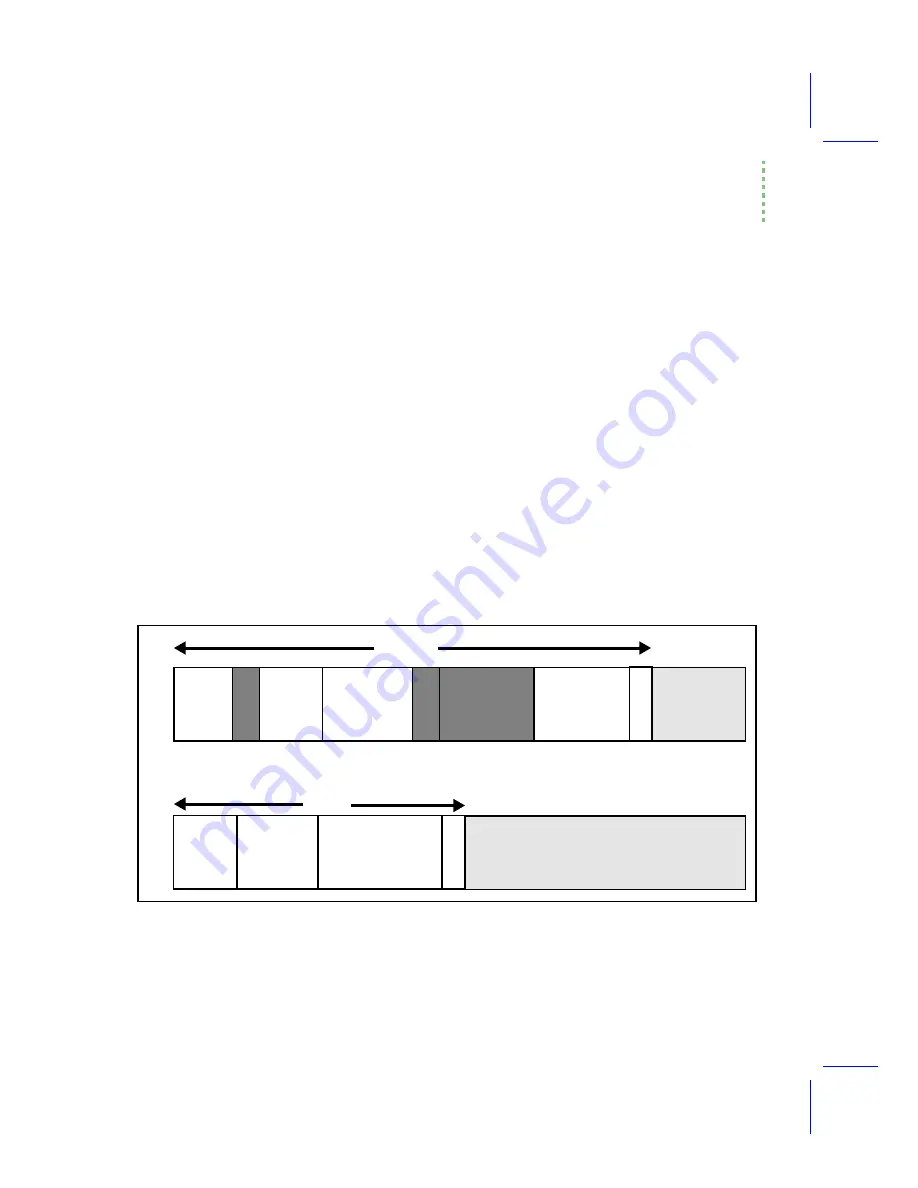
The LPL File System
Defragmentation
Using the LI-6400
10-5
Defragmentation
Flash memory has the advantage of being very stable and safe, even when no
power is applied to it. The disadvantage is that it cannot be overwritten (re-
used) in small pieces. This has serious implications for a file system. Every
time something is written to disk (flash memory), it must be written to a new
(unused) location. This can lead to some surprises:
For example, consider the following example. You collect a number of data
files, and find that the disk is 80% full. In an effort to make room, you delete
some no-longer-needed files, and find that the disk is now 81% full. What
happened? The reason that the space used by the files has not been reclaimed
is that it canÕt be re-used until all of it is erased. Deleting files simply marked
those files as unused, but the directory information was updated, and rewrit-
ing the directory used up some new disk space.
Eventually, of course, the disk will be come full, and something needs to be
done. The normal remedy for a full disk is to defragment it. During this pro-
cess (which is not automatic - you must initiate it), the contents of the disk are
copied to another disk, but only the portions that are still necessary
(Figure 10-3). Deleted files, for example, are not copied.
File1
File 2
File 3a
Dir
File 3b
Unused
Dir
Dir
Used
ÒDeletedÓ
ÒDeletedÓ
File4
File1
File 2
File 3
Dir
Unused
Used
a)
b)
Figure 10-3. Illustration of defragmentation. a) Before defragmentation, there are 3 files and 1 directory, along
with a deleted file and old directory information. b) After defragmentation, the deleted files and directories are
gone, and their space is reclaimed. Also, fragmented files (such as File3) are consolidated.
Summary of Contents for LI-6400
Page 1: ...Using the LI 6400 Portable Photosynthesis System ...
Page 15: ...Part I The Basics ...
Page 16: ......
Page 174: ...Making Measurements Answers to Questions 4 56 Using the LI 6400 4 ...
Page 175: ...Part II Useful Details ...
Page 176: ......
Page 200: ...Standard Tools Power ON Hooks 5 24 Using the LI 6400 5 ...
Page 214: ...Real Time Data Real Time Graphics 6 14 Using the LI 6400 6 ...
Page 234: ...Environmental Control Light Control 7 20 Using the LI 6400 7 ...
Page 244: ...Light Sensor Considerations Gallium Arsenide Phosphide GaAsP Sensor 8 10 Using the LI 6400 8 ...
Page 288: ...Data Logging Making Your Own AutoPrograms 9 44 Using the LI 6400 9 ...
Page 289: ...Part III Working With Files ...
Page 290: ......
Page 312: ...The LPL File System Troubleshooting 10 22 Using the LI 6400 10 ...
Page 340: ...Downloading Files Using a Data Capture Program 11 28 Using the LI 6400 11 ...
Page 375: ...Part IV Configuration Issues ...
Page 376: ......
Page 420: ...Defining User Variables Old Style vs New Style 15 18 Using the LI 6400 15 ...
Page 454: ...Using an Energy Balance Further Reading 17 12 Using the LI 6400 17 ...
Page 455: ...Part V Maintenance Troubleshooting ...
Page 456: ......
Page 572: ...Troubleshooting Useful Information 20 46 Using the LI 6400 20 ...
Page 593: ...Part VI Programming ...
Page 594: ......
Page 622: ...Programming with LPL Compiler Directives 22 28 Using the LI 6400 22 ...
Page 846: ...Index I 16 Using the LI 6400 ...














